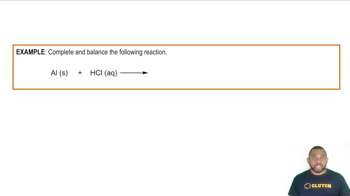Here are the essential concepts you must grasp in order to answer the question correctly.
Combustion Reaction
A combustion reaction is a chemical process in which a substance reacts rapidly with oxygen, producing heat and light. In the case of acetylene (C2H2), complete combustion occurs when there is sufficient oxygen, resulting in carbon dioxide (CO2) and water (H2O) as the primary products. Understanding this reaction is crucial to explaining why CO2 is the predominant product under adequate oxygen conditions.
Recommended video:
Stoichiometry of Combustion
Stoichiometry involves the calculation of reactants and products in chemical reactions based on balanced equations. For the complete combustion of acetylene, the balanced equation shows that two moles of acetylene react with five moles of oxygen to produce four moles of carbon dioxide and two moles of water. This ratio indicates that, with sufficient oxygen, CO2 is produced in greater quantities than other carbon products like CO or soot.
Recommended video:
Oxygen Availability and Product Formation
The availability of oxygen significantly influences the products formed during combustion. In conditions of limited oxygen, incomplete combustion can occur, leading to the formation of carbon monoxide (CO) and soot. However, when oxygen is abundant, the combustion of acetylene favors the formation of carbon dioxide (CO2), as it allows for the complete oxidation of carbon, resulting in fewer byproducts.
Recommended video:
Production of Hydrogen Example



